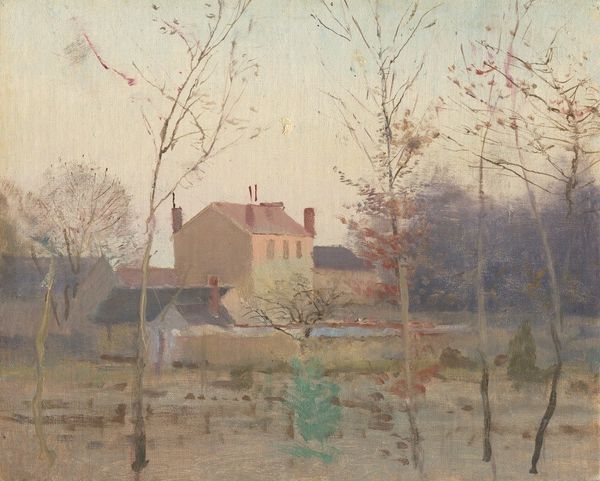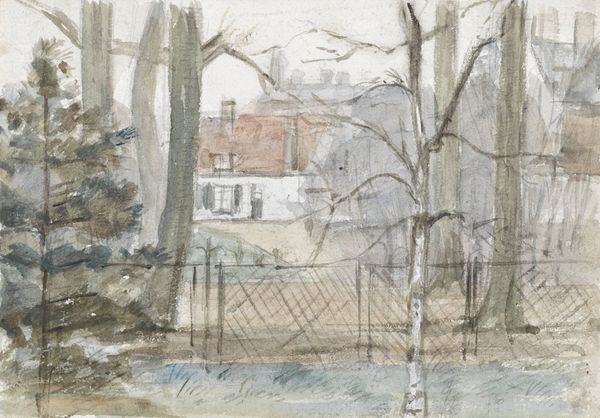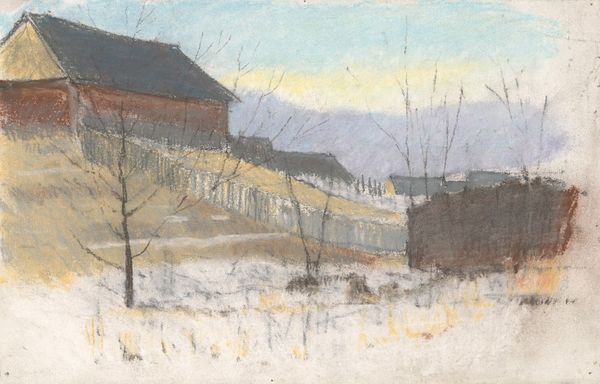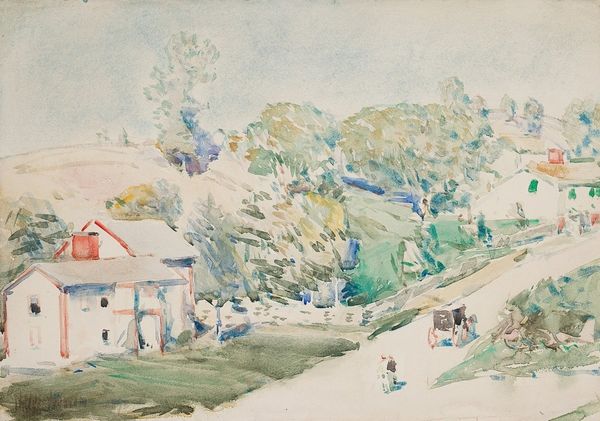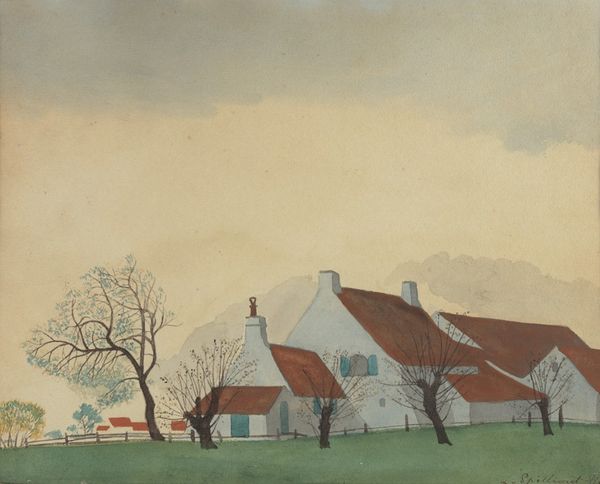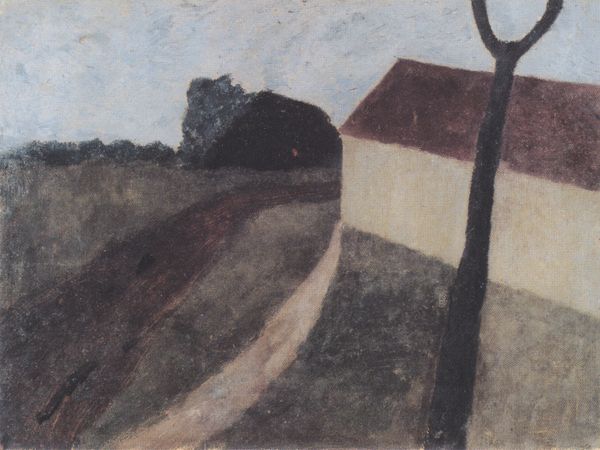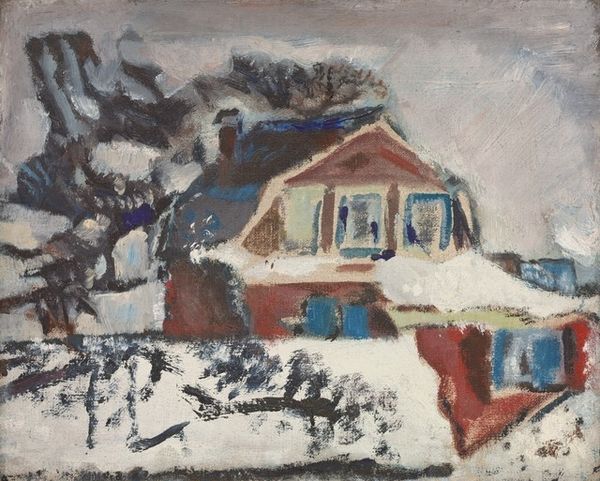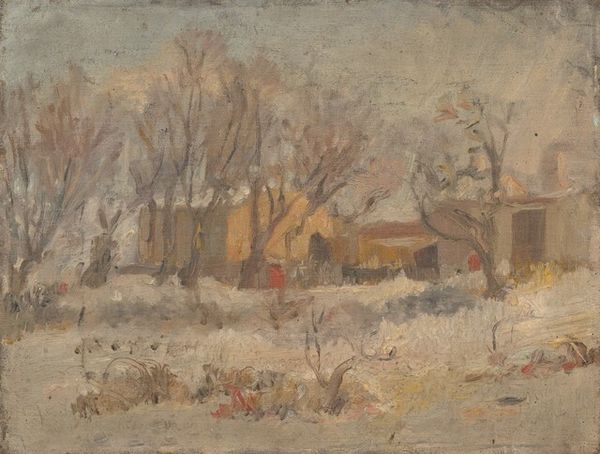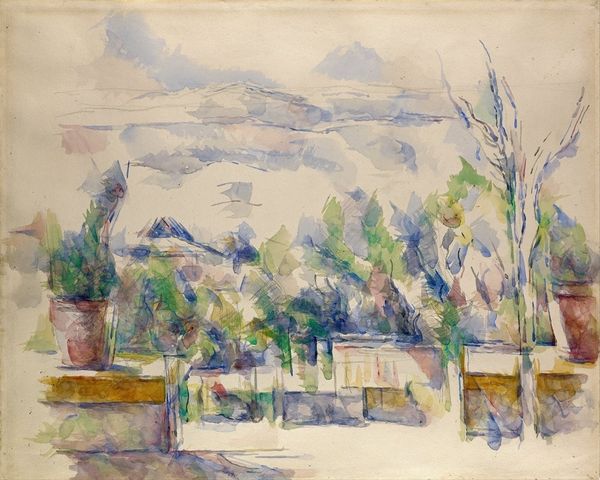
watercolor
#
impressionism
#
landscape
#
watercolor
#
watercolour illustration
#
watercolor
#
realism
Copyright: Constantin Piliuta,Fair Use
Editor: What a soothing image. The delicate watercolor washes create such a soft, dreamlike atmosphere. Curator: This is "Parental House (Birthplace)" by Constantin Piliuta, rendered in watercolor. There's a palpable emphasis on material interaction and artistic labor here, from the layering of pigments to the support upon which they're applied. Editor: Absolutely. The very visible brushstrokes highlight the physical act of painting. But beyond the technique, there’s something powerful in depicting a "parental house". Home often signifies the origin of societal structures, expectations around gender and identity... does this specific imagery tell us more? Curator: The lack of a defined date suggests the work's timelessness. Consider how watercolor allows for portability – this could've been made en plein air, transforming ephemeral perception into something fixed. What impact did the accessibility of materials have for artists coming from marginalized communities at that time? Editor: Interesting point! It's vital to unpack how notions of 'landscape' historically served colonial projects, erasing Indigenous presence. Does the perspective avoid romanticizing the house, instead highlighting its structural integrity as something constructed by human effort rather than inherently majestic? Curator: The fence, though seemingly insignificant, outlines property lines and raises concerns about ownership and access. These elements would be very deliberate for a materially-focused artist! Editor: And let’s consider the near-monochromatic palette. What does such strategic restriction of color communicate about feelings around identity and location in his art? Curator: The repeated presence of the house in his art might echo themes of cultural dislocation, possibly due to the Romanian Communist Regime – did painting this landscape give the artist power? Editor: Looking again at the signature, its placement suggests pride in production while remaining firmly within constraints—such considerations enrich our understanding significantly. Curator: Indeed. Understanding artistic production requires close analysis, especially considering that consumption patterns can perpetuate uneven power dynamics among artists worldwide. Editor: Precisely! Examining those complex realities is crucial in appreciating artwork like this one.
Comments
No comments
Be the first to comment and join the conversation on the ultimate creative platform.


